Great Living Chola Temples: Outstanding Workmanship Of Chola Dynasty Builders Of South India
A. Sutherland - AncientPages.com -The Great Living Chola Temples were built by powerful kings of the Chola Empire, which stretched across southern India, and the neighboring islands.
 Airavatesvara Temple at Darasuram. Image credit: Gughanbose - CC BY-SA 3.0
Airavatesvara Temple at Darasuram. Image credit: Gughanbose - CC BY-SA 3.0
Three temples of the Chola: the Brihadisvara Temple at Gangaikondacholisvaram, the Airavatesvara Temple at Darasuram, and the Brihadisvara Temple at Thanjavur, are dated to the 11th and 12th centuries.
Brihadeeshwara Temple, of which foundations were laid by the Chola king Rajaraja I in 1002 AD, is probably the finest temple in Tamil Nadu.
Powerful Chola Dynasty
The Chola dynasty was one of the longest-ruling dynasties in the history of southern India. The earliest references to this Tamil dynasty are preserved inscriptions dated to the 3rd century BC left by Ashoka.
Ashoka, who died in 232 BC, was one of India's most extraordinary emperors, the Maurya Dynasty. He ruled most of the Indian subcontinent from about 268 to 232 BC.
 Airavatesvara Temple; Image credit: Gughanbose - CC BY-SA 3.0
Airavatesvara Temple; Image credit: Gughanbose - CC BY-SA 3.0
Ashoka reigned over a realm that stretched from the Hindu Kush mountains in Afghanistan to the modern state of Bangladesh in the east.
The great Chola rulers also had significant influence over modern-day southeast Asia. The magnificent Chola Temples testify to the remarkable achievements of the Chola architects, engineers, and artisans.
Significance And Beauty Of The Chola Temples
The Chola kings strongly emphasized the importance of temples, which were places of gatherings for political, economic, and cultural activities, and all-important official ceremonies were held there. The structures demonstrated the enormous power of the Chola rulers, their wealth, imperial domain, and religious importance in the cities.
The temples became a central place in the economy of medieval India, and society depended on them.
Thanjavur Brihadeeswara Temple view from the back. The two gopuras (temple entrance tower) can be seen in the back. Image credit: Aravindreddy.d - CC BY-SA 3.0
Supported by the grants and incoming cash from the kings, wealthy merchants, and nobles, the temples flourished. With time, they became consumers, moneylenders, and employers of priests, musicians, artisans, and people (both men and women) working in temple service.
Additionally, these temples were considered important centers of education and learning, where Sanskrit played a crucial role. The temples' other goal was to encourage and preserve art such as sculpting, painting, and dance, which flourished in the Chola temples.
Today, the temples still have impressive features such as Vimana (the central deity's shrine with a towering roof) and mandapa, a pillared pavilion adorned with elaborate carvings for public rituals.
The Great Living Chola Temples- This is the Brahadeshwara big temple tower. Credit: Adobe Stock - Aarthi
Another impressive feature in the Hindu temple is garbha (literally: 'womb chamber'), decorated with the idol of the temple's main deity.
This chamber is reserved only for priests. Yet another magnificent part of the temples are unique, powerful gopurams (towers), which date back to the early structures of the Tamil kings Cholas, Cheras, Pandyas, and Pallavas.
The Chola temples have all their massive superstructures, richly adorned with portraits, decorative sculptures, paintings, and icons. The temple, dedicated to Shiva, characterizes the tradition of Chola master builders, who indeed loved symmetrical geometry, which is visible in the planning of the temple.
Chola era art demanded dedicated and sophisticated artisans, and their legacy is still admired in India.
Written by – A. Sutherland AncientPages.com Staff Writer
Updated on October 24, 2022
Copyright © AncientPages.com All rights reserved. This material may not be published, broadcast, rewritten or redistributed in whole or part without the express written permission of AncientPages.com
Expand for referencesReferences:
Malarvannan, A. The Life of Mahabalipuram
Thapar, B. Introduction to Indian Architecture
More From Ancient Pages
-
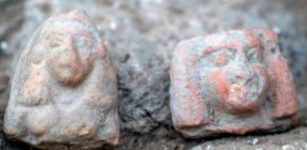 Remains Of 3,400-Year-Old Canaanite Citadel Unearthed In Nahariya, Western Galilee
Archaeology | Jan 6, 2016
Remains Of 3,400-Year-Old Canaanite Citadel Unearthed In Nahariya, Western Galilee
Archaeology | Jan 6, 2016 -
 Nottingham Scientists Investigate An Ancient Boat Buried Under A Pub Car Park
Archaeology | Feb 15, 2023
Nottingham Scientists Investigate An Ancient Boat Buried Under A Pub Car Park
Archaeology | Feb 15, 2023 -
 Ancient European Languages Shed Light On A Great Migration And Weather Vocabulary
Archaeology | Aug 14, 2023
Ancient European Languages Shed Light On A Great Migration And Weather Vocabulary
Archaeology | Aug 14, 2023 -
 Hidden Details Discovered In Picasso’s Painting The Crouching Woman
Archaeology | Feb 28, 2018
Hidden Details Discovered In Picasso’s Painting The Crouching Woman
Archaeology | Feb 28, 2018 -
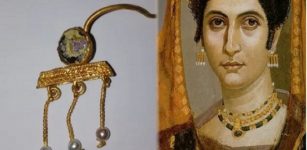 Gold Earring Found In Ruins Of Ancient Roman Colony Deultum In Bulgaria
Archaeology | Oct 11, 2020
Gold Earring Found In Ruins Of Ancient Roman Colony Deultum In Bulgaria
Archaeology | Oct 11, 2020 -
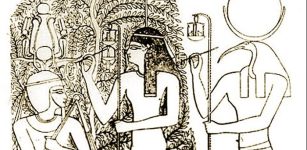 Heliopolis ‘Sun City’ Was One Of The Most Ancient Cities Of Egypt
Featured Stories | Oct 6, 2021
Heliopolis ‘Sun City’ Was One Of The Most Ancient Cities Of Egypt
Featured Stories | Oct 6, 2021 -
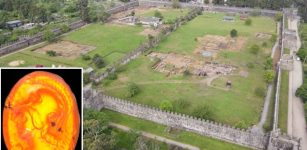 Roman Fort Of Apsaros Reveal Some Of Its Archaeological Secrets
Archaeology | Nov 7, 2023
Roman Fort Of Apsaros Reveal Some Of Its Archaeological Secrets
Archaeology | Nov 7, 2023 -
 Troublesome Momus: Deity Of Irony, Ridicule, Sarcasm And Harmful Jokes In Greek And Roman Mythology
Featured Stories | Mar 14, 2022
Troublesome Momus: Deity Of Irony, Ridicule, Sarcasm And Harmful Jokes In Greek And Roman Mythology
Featured Stories | Mar 14, 2022 -
 Clurichaun – Little Naughty And Drunken Fellow Akin To Leprechaun In Irish Folklore
Featured Stories | Sep 13, 2019
Clurichaun – Little Naughty And Drunken Fellow Akin To Leprechaun In Irish Folklore
Featured Stories | Sep 13, 2019 -
 Medicine in Antiquity: From Ancient Temples To Roman Logistics
Archaeology | Apr 13, 2018
Medicine in Antiquity: From Ancient Temples To Roman Logistics
Archaeology | Apr 13, 2018 -
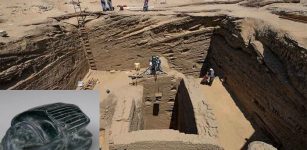 Unique Tomb Of Egyptian Commander Discovered In Abusir Sheds Light On ‘Globalisation’ In Ancient World
Archaeology | Jul 20, 2022
Unique Tomb Of Egyptian Commander Discovered In Abusir Sheds Light On ‘Globalisation’ In Ancient World
Archaeology | Jul 20, 2022 -
 10 Mysterious Ancient Manuscripts With Hidden Secrets
Featured Stories | May 27, 2016
10 Mysterious Ancient Manuscripts With Hidden Secrets
Featured Stories | May 27, 2016 -
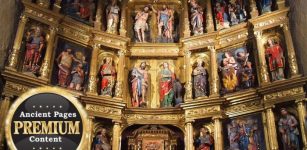 Unusual High-Tech Machine In The Bible Offers Evidence Of Lost Ancient Advanced Civilization
Biblical Mysteries | Aug 18, 2018
Unusual High-Tech Machine In The Bible Offers Evidence Of Lost Ancient Advanced Civilization
Biblical Mysteries | Aug 18, 2018 -
 Unexplained Mystery Of Secret Knowledge And Extraordinary Sightings Hidden In An Author’s Book
Featured Stories | Nov 25, 2021
Unexplained Mystery Of Secret Knowledge And Extraordinary Sightings Hidden In An Author’s Book
Featured Stories | Nov 25, 2021 -
 Ukko: Karelian-Finnish God Of Thunderstorms, Harvest, Patron Of Crops And Cattle
Featured Stories | Apr 2, 2020
Ukko: Karelian-Finnish God Of Thunderstorms, Harvest, Patron Of Crops And Cattle
Featured Stories | Apr 2, 2020 -
 Was Tintagel Castle A Fortress Used By Iconic Hero King Arthur?
Featured Stories | Mar 12, 2016
Was Tintagel Castle A Fortress Used By Iconic Hero King Arthur?
Featured Stories | Mar 12, 2016 -
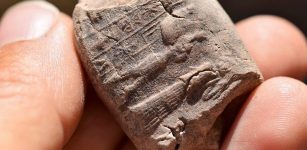 Old Babylonian Residential Building In Ur Dated To 1835 BC – Investigated
Archaeology | Jul 24, 2019
Old Babylonian Residential Building In Ur Dated To 1835 BC – Investigated
Archaeology | Jul 24, 2019 -
 Secrets Of The Two Half Crescent Moons And The Serpent People
Featured Stories | Jan 23, 2020
Secrets Of The Two Half Crescent Moons And The Serpent People
Featured Stories | Jan 23, 2020 -
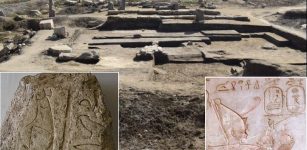 Egyptian Royal Artifacts Found At ‘Ancient Buto’ Site, Egypt Probably Dated To King Psamtik I’s Reign
Archaeology | Jan 4, 2018
Egyptian Royal Artifacts Found At ‘Ancient Buto’ Site, Egypt Probably Dated To King Psamtik I’s Reign
Archaeology | Jan 4, 2018 -
 Incredible Roman Necropolis With Dressed Skeletons Buried In Ornate Tombs Discovered Close To The Ancient City Of Tarquinia
Archaeology | Jan 9, 2024
Incredible Roman Necropolis With Dressed Skeletons Buried In Ornate Tombs Discovered Close To The Ancient City Of Tarquinia
Archaeology | Jan 9, 2024


